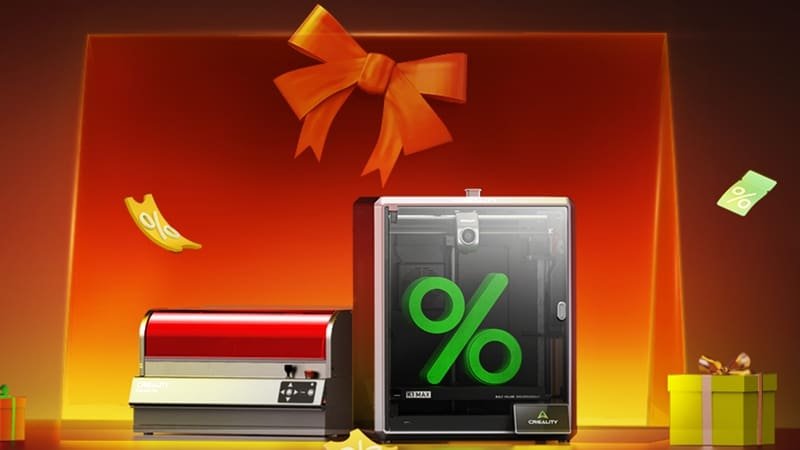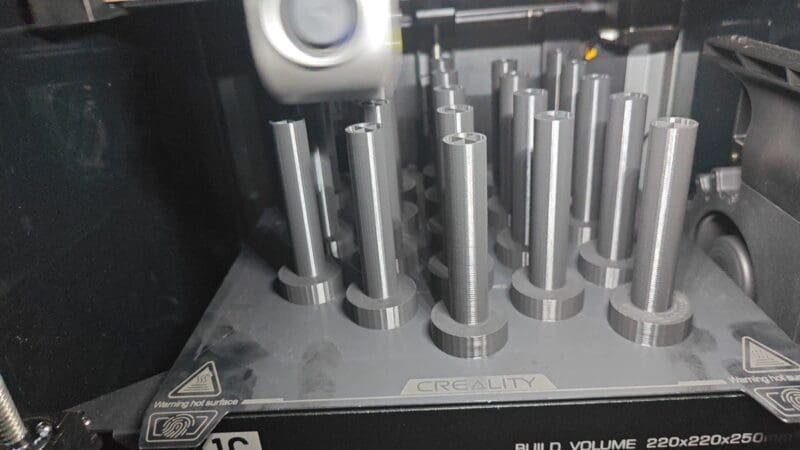How to Remove 3D Prints from Your Bed without Damage

The manufacturing and prototyping industries have been completely transformed by the extraordinarily accurate and adaptable technology known as 3D printing. However, removing 3D prints from the bed after printing might be a difficult operation, especially if you’re new to 3D printing.
But with a few pointers and techniques, you may discover how to remove 3D prints off your bed in a secure and effective manner. This post will tell you everything you need to know about how to get 3D prints off your bed.
Preparation
Preparing Your 3D Printing Bed
It’s important to get ready for bed before removing any 3D-printed items. Before 3D printing, there are a few things you can do to make the removal process simpler. You can follow the instructions listed below:
- Clean your bed surface: Make sure the bed is free of dust, grease, and debris before you start printing. Any oils or grime on the bed can be removed using acetone or rubbing alcohol. Nevertheless, take care not to ruin the bed or make it overly slick.
- Use a proper adhesive: You can use the correct adhesive to increase adhesion, which prevents your 3D prints from moving while they are being printed. Use glue sticks or hairspray, for instance, to make your prints adhere to the bed’s surface.
Let the Bed Cool Down after Printing
It’s critical to allow the bed to cool down for a few seconds once printing is finished and your 3D models are prepared. As a result, there is less chance of the 3D print warping or adhering to the bed. However, if you’re printing with ABS, this could take some time.
5 Ways to Remove 3D Prints from Your Bed Without Damage
Make Use of a Scraper
When the cooling process is complete, the first step in properly removing your 3D print is to use a scraper. This is a commonly used tool for removing the produced model from the 3D bed. In order to remove the print without overstressing the bed, the scraper must be pointed, flat, and powerful enough.
After the print has been loosened, progressively raise the pressure until the object can be removed without further effort. Going around the edges and slowly scraping your 3D model until it’s free from the bed is the best technique to remove your print.
- Bates paint scraper tool 10 in 1 easy to use and…
- A must have tool in your home, Rust-resistant…
- This is a multi purpose tool and is ideal for home…
- Patching dents cracks holes in plaster with soft…
- Package includes: 10 in 1 paint scraper tool
Make Use of a Spatula
A thin, flat spatula is another tool you might use to remove your print. This tool is ideal for more delicate printing, such as thin and narrow designs, that cannot bear too much power. It, like the scraper, is used to progressively loosen the print’s edges.
You can pry the model by inserting the spatula beneath the model’s free edge and moving the spatula back and forth while gradually increasing the amount of force you apply. Repeat this technique, moving around the 3D print’s edges until it comes off.
- Sufficient quantity: this set includes 12 pieces…
- Protect the surface: the plastic putty spatulas…
- Lightweight and flexible plastic: the plastic…
- Durable quality: the air bubble remover is sturdy…
- Multifunctional usage: plastic putty knife is 5.27…
Heating Up Your Bed
The next step is to heat up the bed, which is an alternative method for getting stuff off your bed with minimal force. When you do this, the 3D-printed object warms up and somewhat contracts, making it possible to remove it from the bed without putting too much strain on it or damaging it.
The best approach to accomplish this is to raise the temperature of the bed over the standard 3D printing temperature. To do this, simply turn on your 3D printer and select from the settings menu to heat up the bed.
Clean the Bed with a Hydrogen Peroxide Solution
If you’re still having difficulties removing the 3D print off your bed after using a scraper or spatula and heating doesn’t help, you may try hydrogen peroxide. This solution is ideal since it is mild and capable of dissolving the glue.
To make hydrogen peroxide, combine equal parts water and 3% peroxide solution. Spray the liquid over the bed and wait a few minutes for the glue to dissolve before carefully scraping the 3D item off the bed.
- First aid antiseptic (32 fluid ounces); helps…
- 3% hydrogen peroxide formula
- Paraben and phthalate free
- No rubber latex
- If you like Swan Hydrogen Peroxide, we invite you…
Clean Your Bed With Goo Gone
If hydrogen peroxide does not work, Goo Gone is a good substitute. It’s a well-known adhesive remover that dissolves tenacious adhesives while keeping your bed surface undamaged.
Pour a little quantity of Goo Gone onto a cloth and wipe it over the bed surface. Wait for the solution to release the glue before removing the 3D print off the bed using a scraper or spatula.
- #1 TRUSTED BRAND FOR REMOVING GOOEY MESSES: Try it…
- SAFELY RESTORE YOUR SURFACES: The surface-safe…
- MULTIPLE USES AROUND THE HOUSE: Everything from…
- PERFECT FOR TEACHERS AND PARENTS: Use this to…
- GREAT FOR COLLECTORS AND THRIFTERS: Safely remove…
Preventing Damage While Removing
Certain items should be avoided while taking 3D prints from the bed to avoid damage to the bed or the 3D print itself. Sharp objects, like forks or knives, should be avoided while removing prints since they might produce scratches on the bed surface.
Final Thoughts
To summarize, removing 3D prints off your bed is not always a simple operation, but there are several solutions to assist you in doing so without causing any harm. Preparing the bed surface before printing, allowing the bed to cool before removing the print, using a scraper or spatula, heating the bed, or using a solution, such as hydrogen peroxide or Goo Gone, may all be efficient methods of removing 3D prints from your bed.
Whether you are a beginner or an experienced 3D printer, learning how to securely and quickly remove 3D prints off the bed can save you a lot of time, effort, and resources.
DISCLOSURE: THIS POST MAY CONTAIN AFFILIATE LINKS, MEANING I GET A COMMISSION IF you DECIDE TO MAKE A PURCHASE THROUGH MY LINKS, AT NO COST TO YOU. PLEASE READ MY DISCLOSURE FOR MORE INFO.







